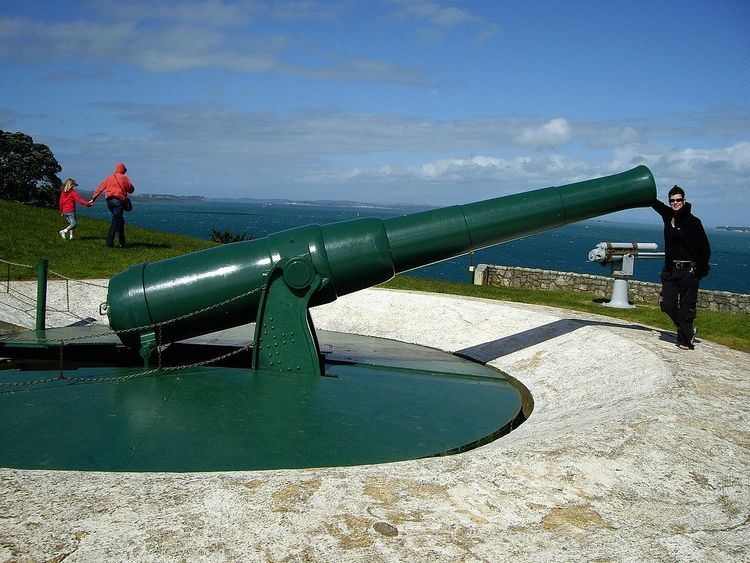Place of origin United Kingdom | In service 1884 - 190? | |
 | ||
Type Naval gun
Coast defence gun Used by United Kingdom
Colonial navies of Australia
New Zealand
Singapore Designer Mk I, VI : RGF
Mk VII : EOC Manufacturer Mk I, III, IV : RGF
Mk III, IV, VI, VII EOC | ||
The BL 8 inch guns Mark I to Mark VII were the first generations of British rifled breechloaders of medium-heavy calibre. They were initially designed for gunpowder propellants and were of both 25.5 and 30 calibres lengths.
Contents
History
Mks I and II were several early proof guns that did not enter British service and Mk V was not made. Limited numbers of 25.5 and 30 calibres guns were produced.
By 1885 the Royal Navy abandoned the 8-inch gun in favour of the 9.2 inch and later the 7.5 inch gun for cruisers, until 1923 when the restrictions of the Washington Naval Treaty led Britain to develop the Mk VIII 8-inch gun in order to arm heavy cruisers with the largest gun allowed by the Treaty.
In the interim Elswick Ordnance continued to develop 8-inch guns in 40 calibre and 45-calibre lengths for export, mainly to Japan.
Mark III
Mk III were low-powered 25-calibres guns mounted on :
Mark IV
Mk IV were 30-calibres guns mounted in :
Mark VI
Mk VI were 30 calibres guns mounted in :
Mark VII
Mk VII were lighter 25-calibres low-powered guns firing a lighter 180-pound projectile used to equip Australian colonial navies and Australian and New Zealand coastal defences in response to expected Russian expansionism in the Pacific (The "Russian scares" of the 1880s).
Naval service
Mk VII guns armed the following Australian colonial gun vessels :
Coast defence gun
Mk VII guns were installed on disappearing mountings in Australia and New Zealand as coast-defence guns during the "Russian scares" of the 1880s. In the event, no Russian invasion occurred and the guns were rarely if ever fired.
Four Mk VII coast defence guns were installed at Singapore in the 1880s-1890s : two atop Mount Serapong and two at Fort Tanjong Katong.
